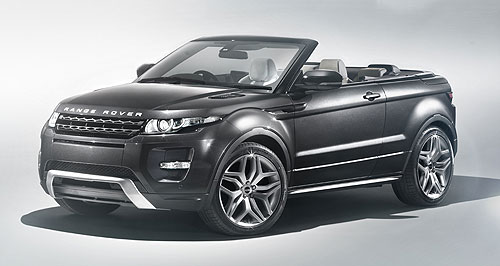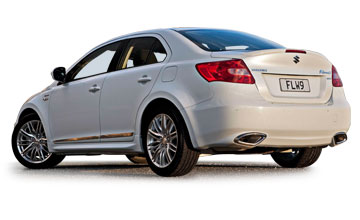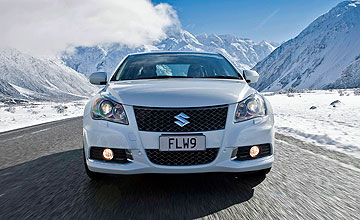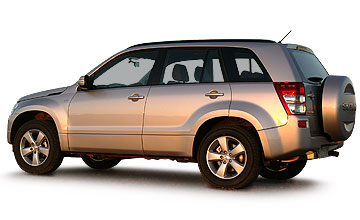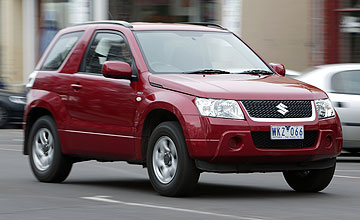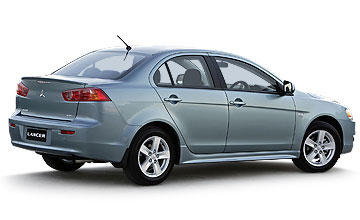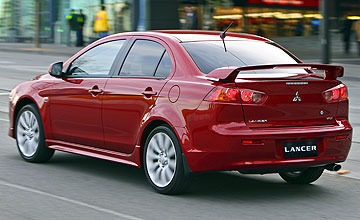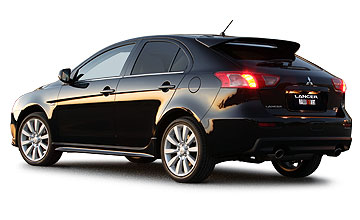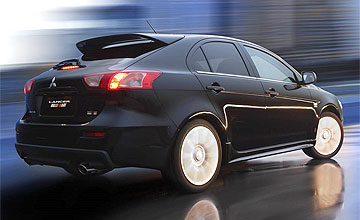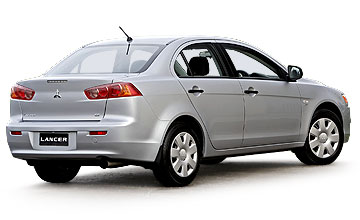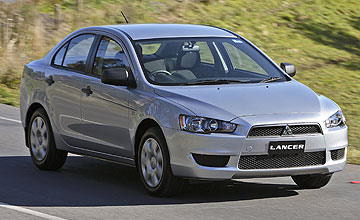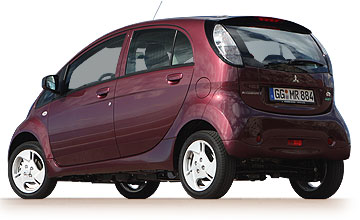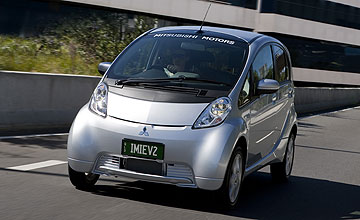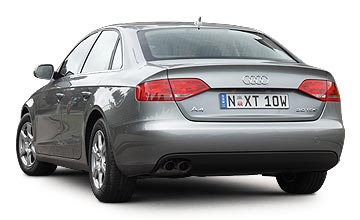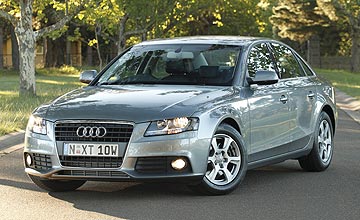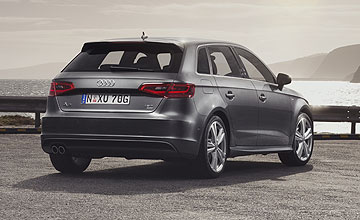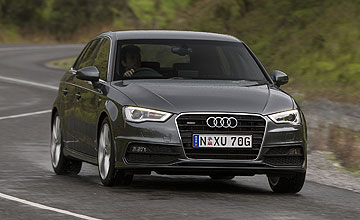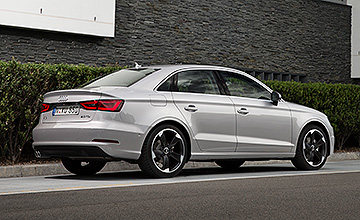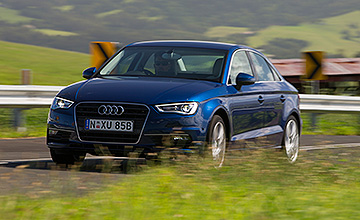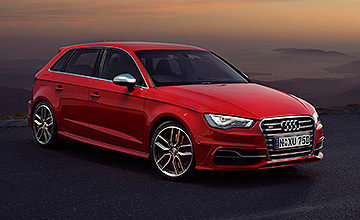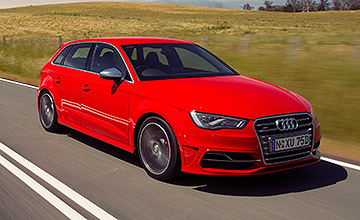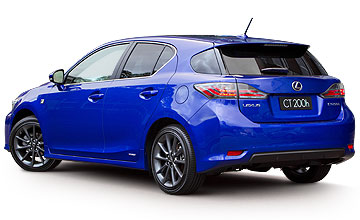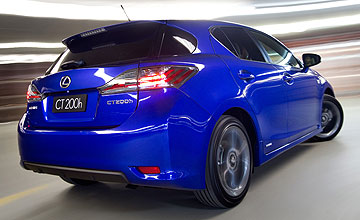Lexus / CT / 200h F-Sport
IN THE RELATIVE CALM before the German baby car blitzkrieg the CT 200h Hybrid is sitting pretty.
Well… pretty isn’t the perfect summation for a car that will win very few beauty contests. “Is it a Mazda?” one person piped up. “A bit bland!” quipped another. Fussy, we say, and a major disappointment to our eyes, particularly after the promising concept car that preceded the productionised version.
Anyway, less than a year away from the next-generations of Audi A3, Mercedes B-class and – of course – the BMW 1 Series due much sooner than that, the littlest Lexus, Australia’s first four-cylinder Lexus, the cheapest-ever hybrid Lexus, and the first-ever car with a tachometer that can switch to a sort of glorified ‘econo-gauge’ a-la early Commodore and Camira, has a few months to bathe in the brilliance of freshness amongst a surprisingly senior bunch of competitors.
And against these, the Japanese petrol-electric hybrid luxo hatch – another world-first but not for long we predict – is fiercely competitive.
Under all those funny angles and lines lay the innards of the Toyota Auris – basically our current-gen Corolla but with a more sophisticated multi-link rear suspension system – as well as the existing Prius petrol-electric hybrid.
Now while that may not sound like a promising beginning, these Toyotas are accomplished if unexciting machines boasting unrivalled reliability and dependability.
Boring? Not if you are a 70 year old woman forced to clamber out of your BMW 120i’s window because the central locking system has deadlocked you inside your car on a 35 degree day; not boring if the dual clutch transmission failure in your VW/Audi sets you back thousands of dollars in repair costs; and not boring if your Merc’s electrically operated steering column costs $5000-plus not to stay kaput. These are first-hand accounts from actual owners writing or calling in to complain. Note all relate to German vehicles.
So is the CT 200h an uppity Prius in Lexus couture, or has the T-brand exorcised the Wal-Mart from its prestige compact motor?
Since this is the company’s first C-segment hatch, let’s begin in the dark recesses of the CT 200h F Sport’s back seat.
With three positions across, there is sufficient space for shoulders, feet, legs and knees, and even headroom is quite good.
But, the window-line upsweep brings a downbeat, confined feeling. The lack of face-level air vents, cupholders, centre armrest and insufficient storage facilities are likely to bring your mood down further. One feels as if this is just any ordinary hatchback back here.
Things improve markedly up front despite an ocean of hard plastic trim that completely flies in the face of Lexus’ once-vaunted slush-moulded technology. Space-age meets Prius pretty much sums it up.
Set on a horizontal plane is a neat array of buttons and LED screen for the climate control air-con, while below that an angled centre console gives the front occupants a sense that they are in an aircraft’s cockpit – or at the very least a modern interpretation of the old Honda NSX.
In the up-spec models the analogue instrument dials light up in white graphics with a choice of the aforementioned eco-charge gauge or a tacho that cleverly changes at a press of a button, depending on which of the four transmission settings is engaged – although strangely, activating the cruise control cuts out the rev counter.
So far so good, for you will have to look far and wide for a clearer speedo and fuel readout.
A sumptuous pair of big, body-hugging bucket seats – electrically adjustable in all sorts of ways for the driver – do a great job in making you feel right home in the CT 200h.
Lexus, too, has sorted out the heating/ventilation basics, with ample heating and cooling as needed, backed up in this guise by very effective front seat warmers.
The well-located three-spoke steering wheel with satellite controls for the audio/media, Bluetooth, trip meter and cruise functions, also bodes well for a wide range of driver-comfort options.
And even rearward vision isn’t as bad as that big fat ugly pillar suggests, thanks to the inclusion of a side window. Having a reverse camera with parking sensors is a massive boon too.
Yet the foot operated park brake belongs in a DeSoto and so jars in a car as modern as this – particularly as the job of engaging Reverse or Drive is via a natty Prius-esque chromed-head joystick.
A very BMW 1 Series-esque addition is the standard on all models bar the base Prestige sat-nav screen that pops up and down from the top of the centre of the dash. Some shorter passengers found it obstructed their forward vision, but in typical Toyota fashion it functions admirably via a novel PC-style mouse-pad setup.
Less likeable are the exposed cupholders and shiny plastic lower-console materials that serve to cheapen this $50K car. These, along with the vinyl door and armrest trims, betray the CT’s Toyota origins. It is barely more premium than an up-spec Corolla. A VW Polo owner would cringe, let alone a Golf driver.
Also surprising is the small glovebox and centre bin that do nothing to alleviate the distinctly average storage solutions in this car. The boot is wide and flat but not very deep (since some of the hybrid gubbins live under there), but at least the split-fold rear seats fold forward to give a competitively large cargo area – if only compared with the outgoing 1 Series. A space-saver spare tyre lives underneath that floor too.
Speaking of floors, flooring the accelerator pedal really betrays the Prius DNA lurking underneath because of a not-inconsiderable thing called a Constant Variable Transmission – CVT for short.
Kicking off in ‘Eco’ mode (with a green light on the dash telling you as much), there is nothing sporty about a CVT. With a distant but discernable drone, this gearbox is inherently laggy by the very nature of its power build up, so the Lexus never feels particularly sprightly off the mark as a result.
But do you care? Once in motion, momentum builds up quickly enough, and suddenly you are speeding along at quite a rate of knots. Put your foot down again and… nothing. You’re in Eco mode, dummy. This is all about saving the bees. The feel-free steering, listless performance… it’s all there for a reason!
So you slot it in ‘Normal’ and not much changes when you take off, but the Lexus’ CVT at least is more willing to change down for a more discernible amount of forward thrust.
In either mode everything about the driving experience is swathed in a rich veneer of smoothness. And for many of you that won’t sound so bad.
Turn the console-mounted rotary knob to Sport, and the dash switches from eerie blue to devil-may-care red, the tacho takes the place of the Econometer, and everything feels somehow faster. It isn’t – not from 0-100km/h – but kick-down responses are much quicker, sporty even, with a hefty mid-range punch to make the front wheels chirp and the environmentally-aware cyclist in you wince.
The CT 200h does an OK impression of Jekyll and Hyde it seems. The fact that we were averaging an indicated 6.3L/100km throughout such driving shenanigans pretty much validates Lexus’ hybrid tech approach. You can have a fast car and a frugal one to boot.
Earlier we mentioned the steering – probably the least driver-orientated helm in terms of feedback and response we have encountered at this end of the price spectrum in a long time. At least it weighs up to a more satisfying degree in Sport.
That’s not to say the Lexus hatch doesn’t handle – it does, and with poise and confidence, and on a range of roads from fresh bitumen to loose gravel besides. Point it through a corner and the car will follow your chosen line precisely, gripping the tarmac with determined tenacity and reassuring control. It’s just you won’t be bombarded with feedback from the road. And for some folk, that’s a desirable thing.
Ultimately, if you’re in Sport and up for a bit of hot hatchery, the CT’s electronic driver aids will intervene early and with authority, but you will get a sense that this car will run progressively wider through a turn the faster you go, with the aforementioned calm degenerating into tyre scrubbing understeer.
Now that would be OK if the payback was an incredibly cosseting ride, but it isn’t. On the F Sport’s 215/45 R17 tyres, the ride ranges from acceptable on smooth roads to at-times annoyingly firm on the many bad surfaces that blight our inner city and suburban streets. Plus, a dull roar broadcasting throughout the cabin often accompanies the suspension’s tiresome jitteriness.
Just to make sure we were not being overly critical we plied the same roads with a Golf 118TSI on standard rubber, and the difference in refinement (among other attributes) was truly remarkable. Lexus, more work is needed here.
The CT 200h feels like a (very good) work in progress. In so many ways it is right up there with the posh Euro hatches, but with a unique persona backed up by a truly remarkable drivetrain.
However this car falls between stools spectacularly too.
Bring the sporty expectations down a notch or two and the CT could make complete sense as a rapid and economical compact express with comfort, reliability and serenity to spare.
Except the F Sport version at least isn’t that supple and the tyres transmit too much road noise.
Yet we still rate it highly enough to put it right up there with its ageing German competition, because most owners will love what the Lexus can do anyway, while doing it with reassuring durability and dependability.
Just don’t expect the Japanese car to be sitting so prettily 12 months down the track when it becomes the oldest member of the compact premium hatch posse.
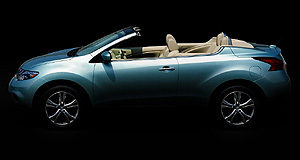
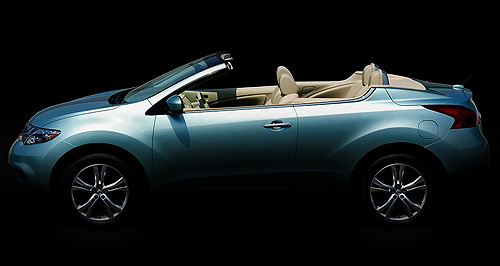
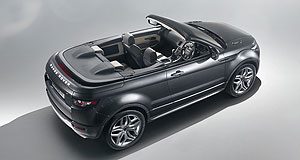
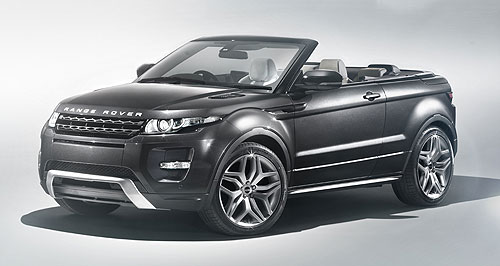 He said the concept would be used at Geneva to gauge reaction and assess the potential of a production model.
He said the concept would be used at Geneva to gauge reaction and assess the potential of a production model.